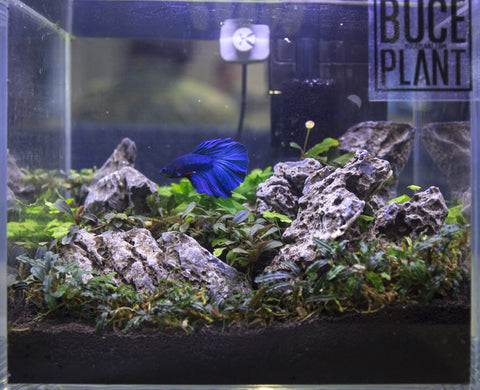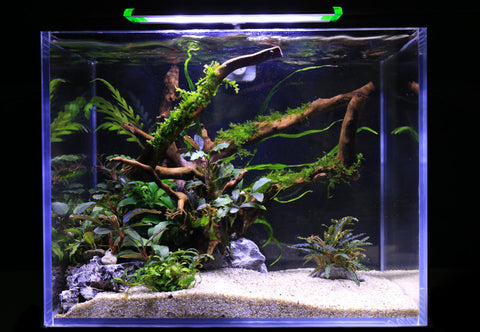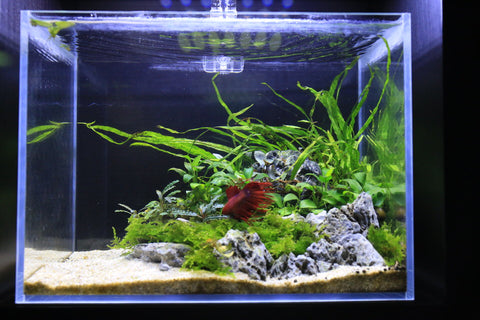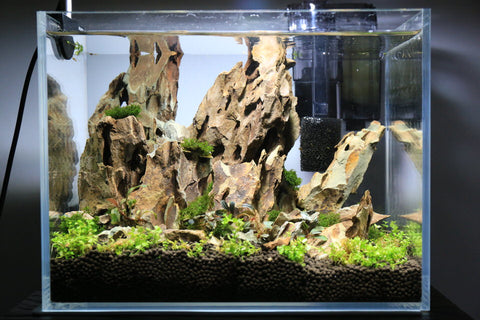How to Build Low-Tech Planted Tanks Guide
Keeping a natural-looking planted aquarium can seem intimidating for newcomers who are just getting their feet wet in the hobby. We here at Buce Plant want to show you that its extremely easy if you’re using the right tools and keeping the right livestock.
There is a wide range of different types of planted aquariums out there; high-tech tanks with high light and CO2, low-tech tanks, biotypes, Dutch style, Iwagumi, nature style, Walstad method, and many more. In this blog post, we will focus mainly on low-tech planted tanks to give beginners a starting point and show that anyone can keep a lush aquascape alive.
For our purposes, we will define a low tech planted tank as a tank with no CO2 injection and no added fertilizers.
Our philosophy is easy--keep it simple!
This is based on our experience in dealing with our low-tech tanks. Sometimes, beginners try to adjust the pH, gH, and kH to the ideal parameters. Instead, let the tank cycle itself first. For information on the importance of cycling a tank click here. Make sure your tank is cycled before adding any fauna.
For our low-tech tanks, it is best to perform a 15-25% water change once a week with dechlorinated water. You can use products such as SL-AQUA Black More Stabilizer to dechlorinate your water. Our team has found that it is better for your tank & livestock to do smaller water changes more frequently. (It is not recommended to do a water change only once a month.) For more information about water changes, click HERE. Of course, everyone will have different tap water depending on where you’re located so choosing hardy live stock will help keep things easy.
For plants, it's best to stick to easy, low light requirement species such as Bucephalandra (our favorite), Anubias, Moss, Cryptocorynes, and Java Ferns. If you’re going for a lush foreground with a carpeting plant, try an easier one like Micranthemum Monte Carlo. These plants generally don’t require the addition of CO2 and so lower output lights can be used. In fact, using too much light is the main cause of algae, especially in low tech tanks where plants aren’t exposed to fertilizers and CO2.
We have a compiled list of our favorite low-tech plants HERE.
Here are some low-tech nano tanks that we’ve been experimenting with for the past six months:
All of them receive the same maintenance:
- 20% water change every week
- Feeding twice a week
- Top off with dechlorinated water as necessary, typically once a week
- Wipe the glass with an algae scraper once every two weeks
- Rinse off filter media and sponges (using old tank water) at least once every three months (We like to use the Mighty Aquarium Filter HOB in our betta nano tanks)
Aside from these 5 simple steps, we don’t use any CO2 or fertilizer dosing, and the water has not been tested after the tanks cycled.




All of the tanks contain Neocaridina Cherry Shrimp or Blue Dream Shrimp. We started with 5-10 shrimps per tank and the population has exploded to over 50-100 shrimp in each aquascape.
Tell us - Was this article helpful? Please leave a comment below!
If you have any questions regarding this article, please DM us on Instagram, Facebook, or email support@buceplant.com so we can assist you - @buceplant





Comments
Leave a comment